Rohan Chandra
UT Austin
SOCIALMAPF: Optimal and Efficient Multi-Agent Path Finding with Strategic Agents for Social Navigation
Oct 15, 2022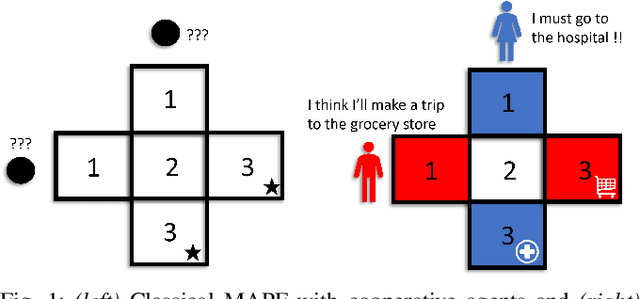



Abstract:We propose an extension to the MAPF formulation, called SocialMAPF, to account for private incentives of agents in constrained environments such as doorways, narrow hallways, and corridor intersections. SocialMAPF is able to, for instance, accurately reason about the urgent incentive of an agent rushing to the hospital over another agent's less urgent incentive of going to a grocery store; MAPF ignores such agent-specific incentives. Our proposed formulation addresses the open problem of optimal and efficient path planning for agents with private incentives. To solve SocialMAPF, we propose a new class of algorithms that use mechanism design during conflict resolution to simultaneously optimize agents' private local utilities and the global system objective. We perform an extensive array of experiments that show that optimal search-based MAPF techniques lead to collisions and increased time-to-goal in SocialMAPF compared to our proposed method using mechanism design. Furthermore, we empirically demonstrate that mechanism design results in models that maximizes agent utility and minimizes the overall time-to-goal of the entire system. We further showcase the capabilities of mechanism design-based planning by successfully deploying it in environments with static obstacles. To conclude, we briefly list several research directions using the SocialMAPF formulation, such as exploring motion planning in the continuous domain for agents with private incentives.
Game-Theoretic Planning for Autonomous Driving among Risk-Aware Human Drivers
May 01, 2022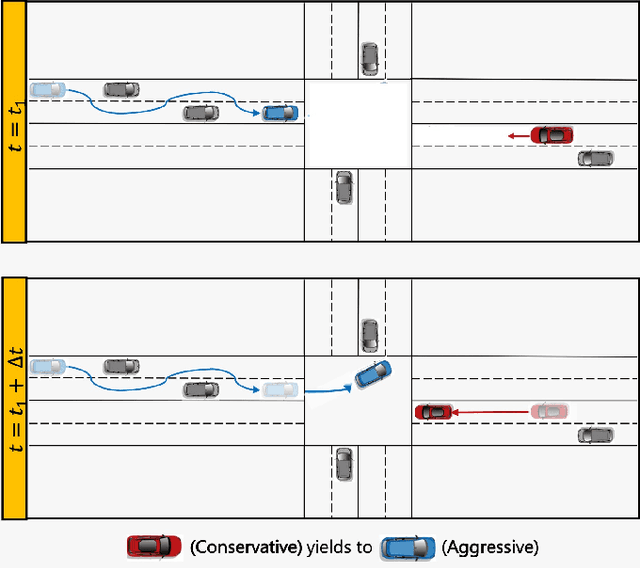

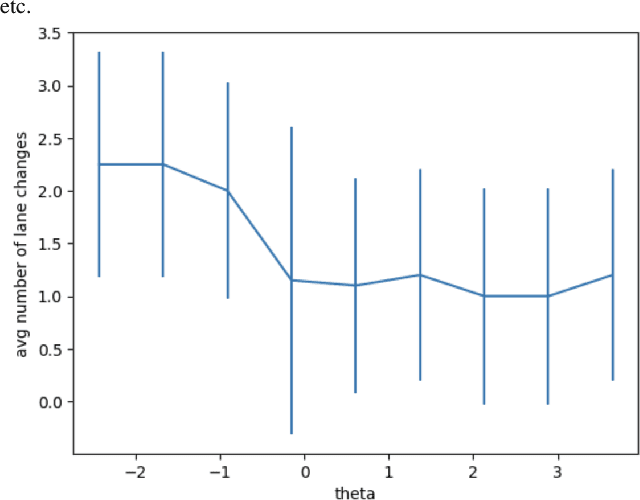
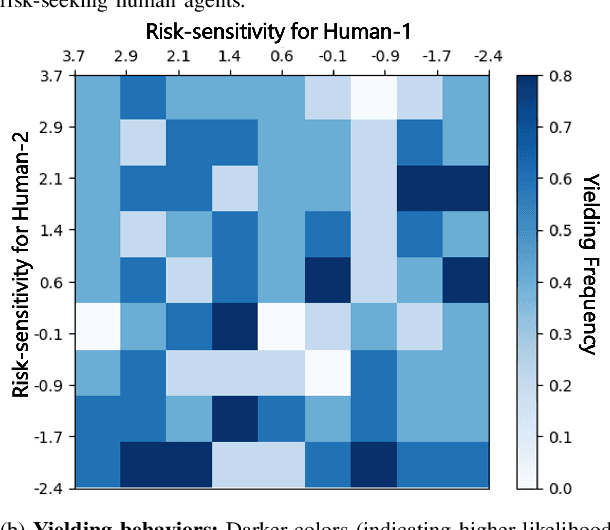
Abstract:We present a novel approach for risk-aware planning with human agents in multi-agent traffic scenarios. Our approach takes into account the wide range of human driver behaviors on the road, from aggressive maneuvers like speeding and overtaking, to conservative traits like driving slowly and conforming to the right-most lane. In our approach, we learn a mapping from a data-driven human driver behavior model called the CMetric to a driver's entropic risk preference. We then use the derived risk preference within a game-theoretic risk-sensitive planner to model risk-aware interactions among human drivers and an autonomous vehicle in various traffic scenarios. We demonstrate our method in a merging scenario, where our results show that the final trajectories obtained from the risk-aware planner generate desirable emergent behaviors. Particularly, our planner recognizes aggressive human drivers and yields to them while maintaining a greater distance from them. In a user study, participants were able to distinguish between aggressive and conservative simulated drivers based on trajectories generated from our risk-sensitive planner. We also observe that aggressive human driving results in more frequent lane-changing in the planner. Finally, we compare the performance of our modified risk-aware planner with existing methods and show that modeling human driver behavior leads to safer navigation.
GAMEOPT: Optimal Real-time Multi-Agent Planning and Control for Dynamic Intersections
Mar 18, 2022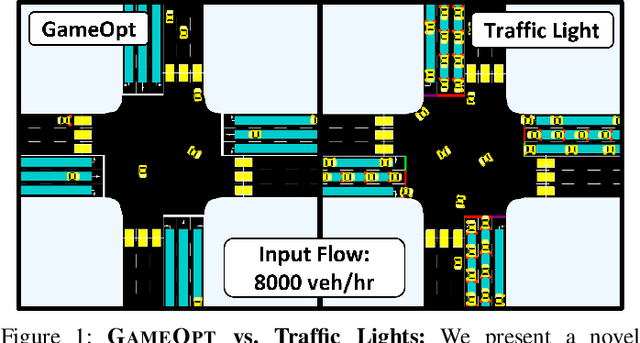
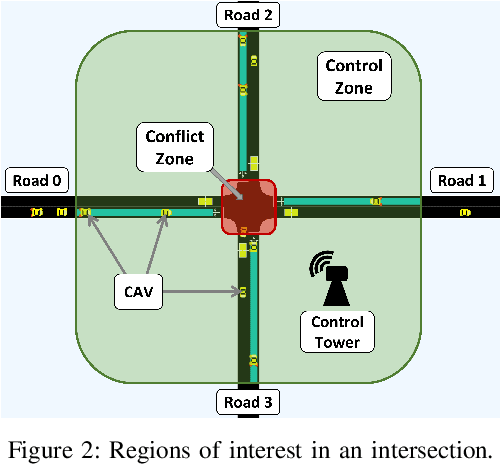
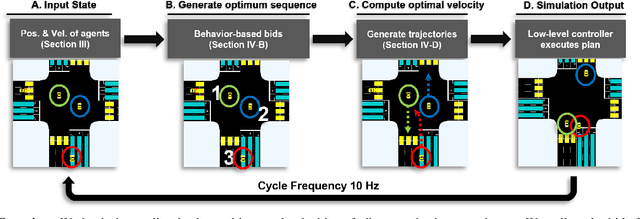
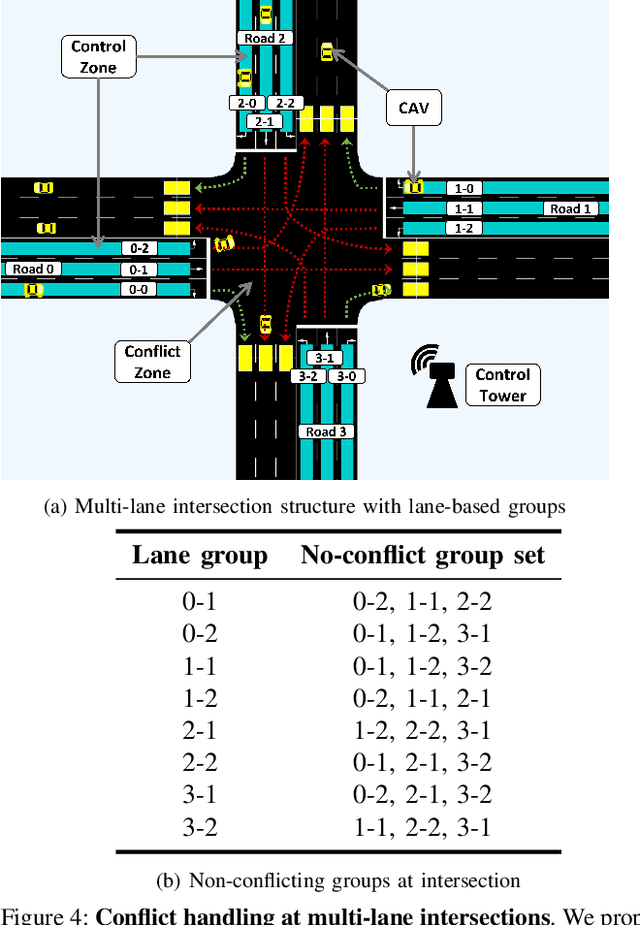
Abstract:We propose GameOpt: a novel hybrid approach to cooperative intersection control for dynamic, multi-lane, unsignalized intersections. Safely navigating these complex and accident prone intersections requires simultaneous trajectory planning and negotiation among drivers. GameOpt is a hybrid formulation that first uses an auction mechanism to generate a priority entrance sequence for every agent, followed by an optimization-based trajectory planner that computes velocity controls that satisfy the priority sequence. This coupling operates at real-time speeds of less than 10 milliseconds in high density traffic of more than 10,000 vehicles/hr, 100 times faster than other fully optimization-based methods, while providing guarantees in terms of fairness, safety, and efficiency. Tested on the SUMO simulator, our algorithm improves throughput by at least 25%, time taken to reach the goal by 75%, and fuel consumption by 33% compared to auction-based approaches and signaled approaches using traffic-lights and stop signs.
Using Graph-Theoretic Machine Learning to Predict Human Driver Behavior
Nov 04, 2021

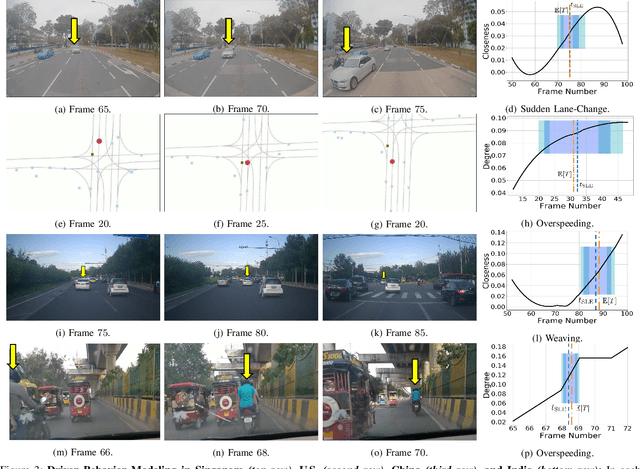

Abstract:Studies have shown that autonomous vehicles (AVs) behave conservatively in a traffic environment composed of human drivers and do not adapt to local conditions and socio-cultural norms. It is known that socially aware AVs can be designed if there exists a mechanism to understand the behaviors of human drivers. We present an approach that leverages machine learning to predict, the behaviors of human drivers. This is similar to how humans implicitly interpret the behaviors of drivers on the road, by only observing the trajectories of their vehicles. We use graph-theoretic tools to extract driver behavior features from the trajectories and machine learning to obtain a computational mapping between the extracted trajectory of a vehicle in traffic and the driver behaviors. Compared to prior approaches in this domain, we prove that our method is robust, general, and extendable to broad-ranging applications such as autonomous navigation. We evaluate our approach on real-world traffic datasets captured in the U.S., India, China, and Singapore, as well as in simulation.
METEOR: A Massive Dense & Heterogeneous Behavior Dataset for Autonomous Driving
Sep 30, 2021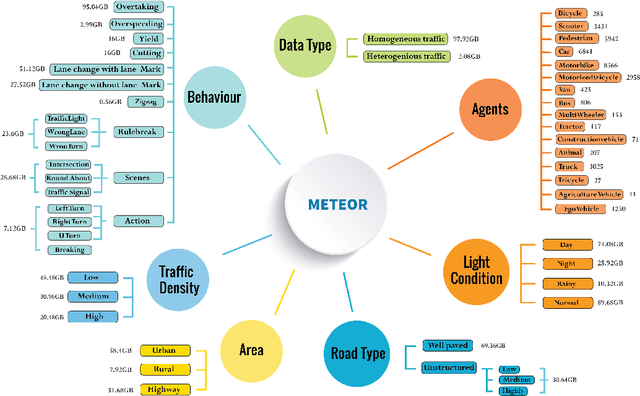
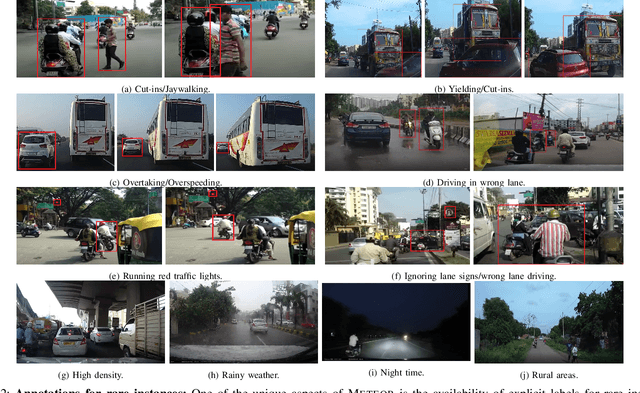
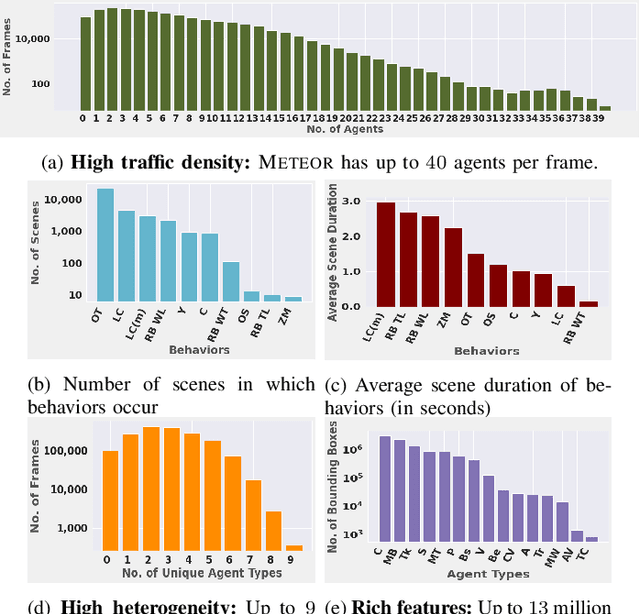
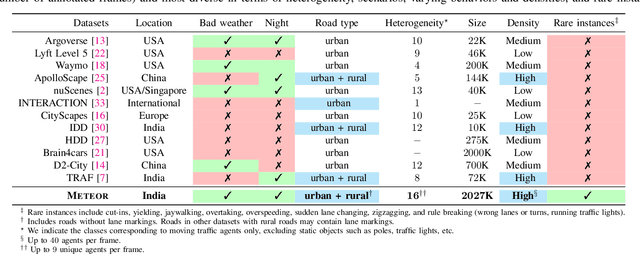
Abstract:We present a new and complex traffic dataset, METEOR, which captures traffic patterns in unstructured scenarios in India. METEOR consists of more than 1000 one-minute video clips, over 2 million annotated frames with ego-vehicle trajectories, and more than 13 million bounding boxes for surrounding vehicles or traffic agents. METEOR is a unique dataset in terms of capturing the heterogeneity of microscopic and macroscopic traffic characteristics. Furthermore, we provide annotations for rare and interesting driving behaviors such as cut-ins, yielding, overtaking, overspeeding, zigzagging, sudden lane changing, running traffic signals, driving in the wrong lanes, taking wrong turns, lack of right-of-way rules at intersections, etc. We also present diverse traffic scenarios corresponding to rainy weather, nighttime driving, driving in rural areas with unmarked roads, and high-density traffic scenarios. We use our novel dataset to evaluate the performance of object detection and behavior prediction algorithms. We show that state-of-the-art object detectors fail in these challenging conditions and also propose a new benchmark test: action-behavior prediction with a baseline mAP score of 70.74.
GamePlan: Game-Theoretic Multi-Agent Planning with Human Drivers at Intersections, Roundabouts, and Merging
Sep 04, 2021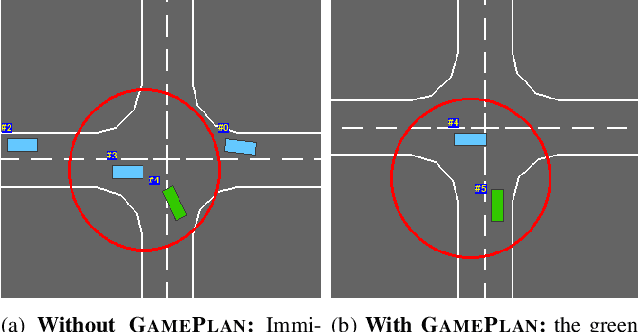
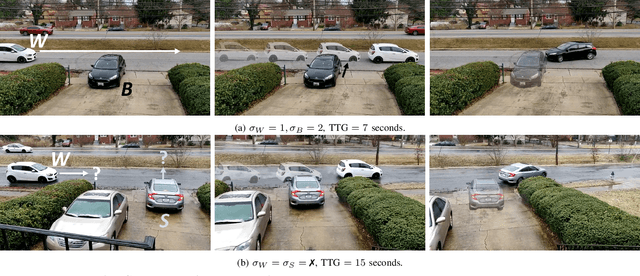
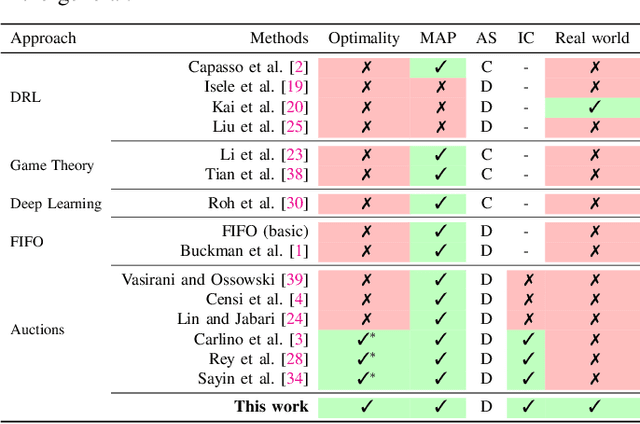

Abstract:We present a new method for multi-agent planning involving human drivers and autonomous vehicles (AVs) in unsignaled intersections, roundabouts, and during merging. In multi-agent planning, the main challenge is to predict the actions of other agents, especially human drivers, as their intentions are hidden from other agents. Our algorithm uses game theory to develop a new auction, called \model, that directly determines the optimal action for each agent based on their driving style (which is observable via commonly available sensors like lidars and cameras). GamePlan assigns a higher priority to more aggressive or impatient drivers and a lower priority to more conservative or patient drivers; we theoretically prove that such an approach, although counter-intuitive, is game-theoretically optimal. Our approach successfully prevents collisions and deadlocks. We compare our approach with prior state-of-the-art auction techniques including economic auctions, time-based auctions (first-in first-out), and random bidding and show that each of these methods result in collisions among agents when taking into account driver behavior. We additionally compare with methods based on deep reinforcement learning, deep learning, and game theory and present our benefits over these approaches. Finally, we show that our approach can be implemented in the real-world with human drivers.
M3DeTR: Multi-representation, Multi-scale, Mutual-relation 3D Object Detection with Transformers
Apr 30, 2021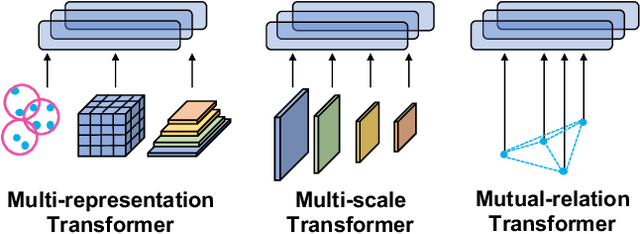

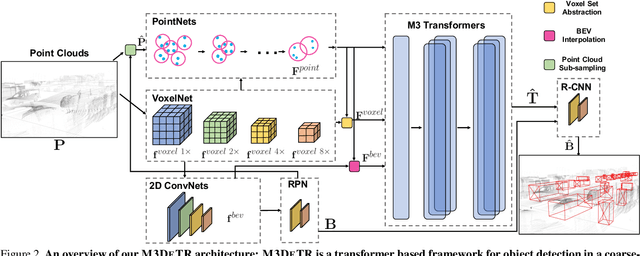

Abstract:We present a novel architecture for 3D object detection, M3DeTR, which combines different point cloud representations (raw, voxels, bird-eye view) with different feature scales based on multi-scale feature pyramids. M3DeTR is the first approach that unifies multiple point cloud representations, feature scales, as well as models mutual relationships between point clouds simultaneously using transformers. We perform extensive ablation experiments that highlight the benefits of fusing representation and scale, and modeling the relationships. Our method achieves state-of-the-art performance on the KITTI 3D object detection dataset and Waymo Open Dataset. Results show that M3DeTR improves the baseline significantly by 1.48% mAP for all classes on Waymo Open Dataset. In particular, our approach ranks 1st on the well-known KITTI 3D Detection Benchmark for both car and cyclist classes, and ranks 1st on Waymo Open Dataset with single frame point cloud input.
GANav: Group-wise Attention Network for Classifying Navigable Regions in Unstructured Outdoor Environments
Mar 07, 2021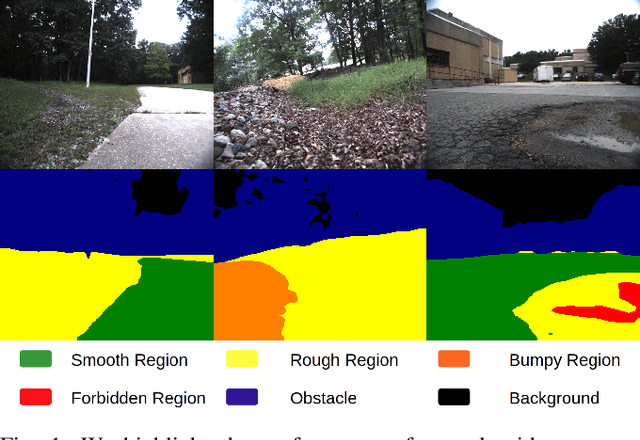
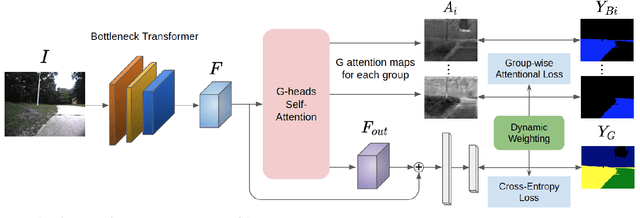
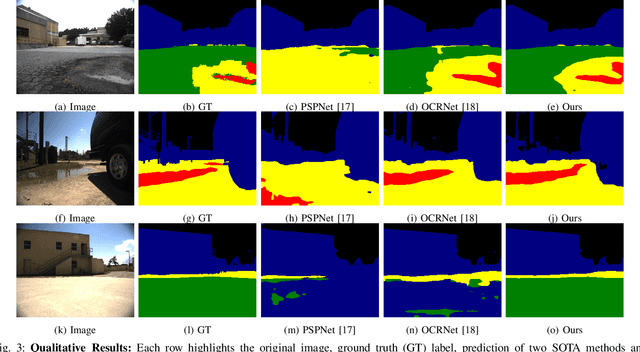
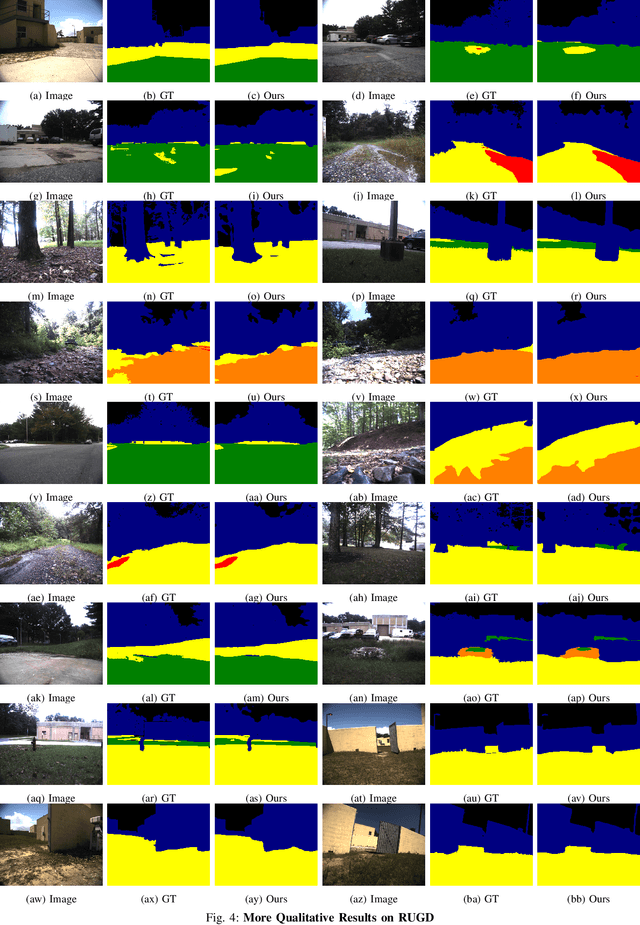
Abstract:We present a new learning-based method for identifying safe and navigable regions in off-road terrains and unstructured environments from RGB images. Our approach consists of classifying groups of terrain classes based on their navigability levels using coarse-grained semantic segmentation. We propose a bottleneck transformer-based deep neural network architecture that uses a novel group-wise attention mechanism to distinguish between navigability levels of different terrains.Our group-wise attention heads enable the network to explicitly focus on the different groups and improve the accuracy. In addition, we propose a dynamic weighted cross entropy loss function to handle the long-tailed nature of the dataset. We show through extensive evaluations on the RUGD and RELLIS-3D datasets that our learning algorithm improves the accuracy of visual perception in off-road terrains for navigation. We compare our approach with prior work on these datasets and achieve an improvement over the state-of-the-art mIoU by 6.74-39.1% on RUGD and 3.82-10.64% on RELLIS-3D.
SAfE: Self-Attention Based Unsupervised Road Safety Classification in Hazardous Environments
Nov 27, 2020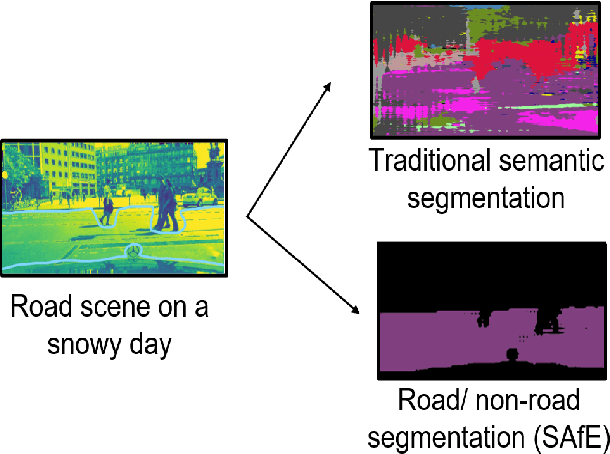

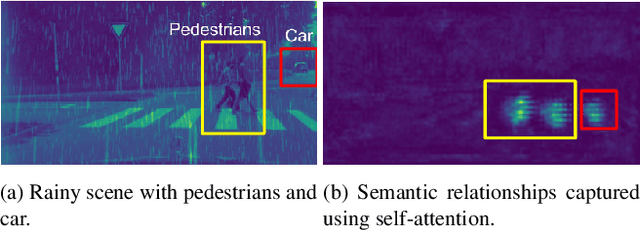

Abstract:We present a novel approach SAfE that can identify parts of an outdoor scene that are safe for driving, based on attention models. Our formulation is designed for hazardous weather conditions that can impair the visibility of human drivers as well as autonomous vehicles, increasing the risk of accidents. Our approach is unsupervised and uses domain adaptation, with entropy minimization and attention transfer discriminators, to leverage the large amounts of labeled data corresponding to clear weather conditions. Our attention transfer discriminator uses attention maps from the clear weather image to help the network learn relevant regions to attend to, on the images from the hazardous weather dataset. We conduct experiments on CityScapes simulated datasets depicting various weather conditions such as rain, fog and snow under different intensities, and additionally on Berkeley Deep Drive. Our result show that using attention models improves the standard unsupervised domain adaptation performance by 29.29%. Furthermore, we also compare with unsupervised domain adaptation methods and show an improvement of at least 12.02% (mIoU) over the state-of-the-art.
StylePredict: Machine Theory of Mind for Human Driver Behavior From Trajectories
Nov 11, 2020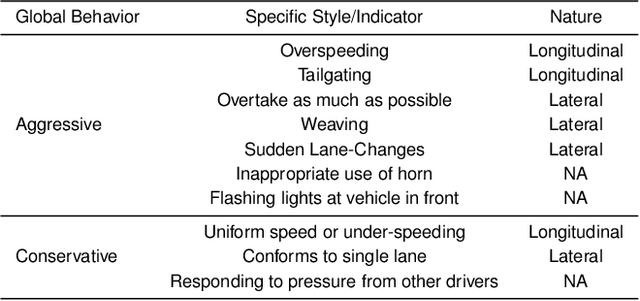


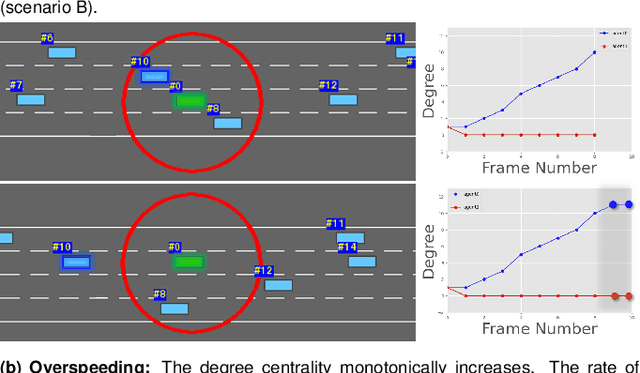
Abstract:Studies have shown that autonomous vehicles (AVs) behave conservatively in a traffic environment composed of human drivers and do not adapt to local conditions and socio-cultural norms. It is known that socially aware AVs can be designed if there exist a mechanism to understand the behaviors of human drivers. We present a notion of Machine Theory of Mind (M-ToM) to infer the behaviors of human drivers by observing the trajectory of their vehicles. Our M-ToM approach, called StylePredict, is based on trajectory analysis of vehicles, which has been investigated in robotics and computer vision. StylePredict mimics human ToM to infer driver behaviors, or styles, using a computational mapping between the extracted trajectory of a vehicle in traffic and the driver behaviors using graph-theoretic techniques, including spectral analysis and centrality functions. We use StylePredict to analyze driver behavior in different cultures in the USA, China, India, and Singapore, based on traffic density, heterogeneity, and conformity to traffic rules and observe an inverse correlation between longitudinal (overspeeding) and lateral (overtaking, lane-changes) driving styles.
 Add to Chrome
Add to Chrome Add to Firefox
Add to Firefox Add to Edge
Add to Edge